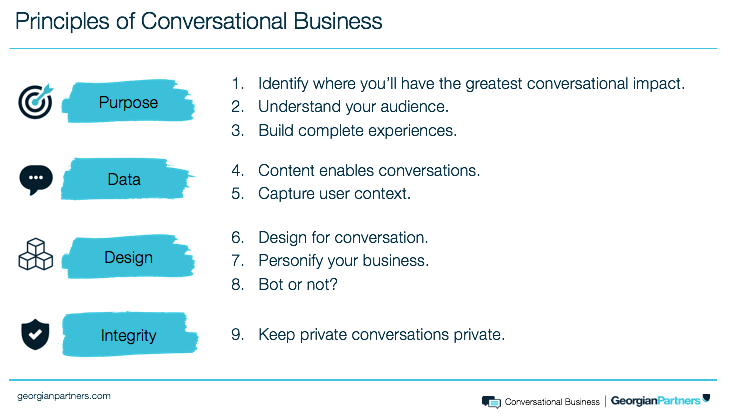Our Director of Solutions Marketing, Brendan McClure, shares his key takeaways from the keynote presentations at our inaugural event. This blog is the first in a series of Activate 2017 posts.
The case for health consumer activation and strategies for driving activation were clear focuses at Activate 2017, the premier healthcare consumer-activation event. Presentations by our two keynote speakers, Dr Judith Hibbard, lead author of the Patient Activation Measure as well as listed in Thompson Reuter’s 2015 and 2016 editions of The Most Cited Researchers Globally, and Jason Brenier, Director of Strategy at Georgian Partners, worked in conjunction to show the positive health and business outcomes of activated healthcare consumers as well as how conversational business can be leveraged to better connect consumers with their health.
In her session, Dr. Hibbard demonstrated the link between activation and patient behaviors, outcomes, healthcare utilization and costs. The Patient Activation Measure (PAM) assesses patient ability to and likelihood of completing healthy behaviors. In effect, it is a predictor of whether a patient can and will do their part in the care processes. For example, if self-management services are offered, typically only more activated patients will participate. Importantly for care delivery systems, her research has tied higher PAM scores to improved outcomes and lower costs.
After controlling for demographics and health status, there is a $1987 per patient annual cost differential between those patients who stay high in activation and those who stay low in activation over time. That represents a 31% difference.
Dr. Hibbard stressed that care systems must meet patients where they are. Too often health systems focus on at-risk populations, yet many health behaviors being asked of these patients are complex and challenging. Patients with low activation not only fail to complete these tasks, but the act of failing can discourage them from trying other care interventions. Using PAM the least activated patients can be identified, so that support can focus on activation by improving their knowledge, confidence and teaching new skills.
When the burden to complete a task outweighs the benefit, the task will typically go undone. Dr. Hibbard explained that an individual’s self-perception influences this. Someone lacking confidence is unlikely to tackle a task that is complex. This connected well with Brenier’s discussion on how consumer behaviors are influenced by convenience.
Consumers are attracted to the path of least resistance. Convenience leads to increased consumer adoption, utilization and loyalty over the long-term. Brenier introduced this theme when describing the journey from Web to Apps and recently to chat. Mobile Apps added a whole new level of consumer convenience by bringing large amounts of functionality to the phone. But now mobile app usage is declining 20% YOY as consumers select messaging as the channel they are most comfortable engaging. Why? Chat is easy, humans are designed to chat and the interface is intuitive. In contrast, App functionality must be learned which contributes to App fatigue and ultimately non-use.
Similar to Dr. Hibbard’s comment on the importance of health organizations to meet patients where they are, taking into account their level of health activation, Brenier stressed that organizations must adopt conversational business to effectively reach their consumers. There is an expectation amongst consumers to access rich insights and services through a simple interface with minimal effort. Companies must adopt chat interfaces wherein the UX design is about language, dialogue and conversation experiences. This is how businesses meet consumers “where they are.”
Brenier developed 9 Principles for Conversational Business to help organizations figure out how to launch these initiatives.

There was agreement amongst the attendees at Activate 2017 that conversational business was part of their consumer engagement plans. They highlighted both the potential to influence consumers and the cost effectiveness of the approach as key drivers for change. There was also consistency about the types of challenges conversational business posed, such as who creates the content (dialogues are different to outbound campaign-based copy) and how conversational business is managed across multiple channels. It was clear that the path to conversational business was a strategic goal for many organizations, though the healthcare industry is historically slow at adopting new technology. This in mind, the general consensus was that the best pathway to get there was by taking small steps at a time. As Allison Melun of Delta Dental of Colorado said, “you don’t have to do it all at once.”
Healthcare organizations are looking to other industries for cues on how to deliver a more consumer-focused experience. Brenier clearly demonstrated the potential for industries to meet consumers where they are using conversational business. Given the scale and complexity of healthcare, it naturally translates that there is an enormous number of areas where conversational approaches can deliver a more streamlined and tailored consumer experience. Improving health activation is one of these areas. Dr. Hibbard stressed the importance of healthcare systems tailoring their interactions with patients with low activation scores. By leveraging tailored conversational approaches, healthcare systems can lower the barriers for patient activation and truly meet their patients where they are.





